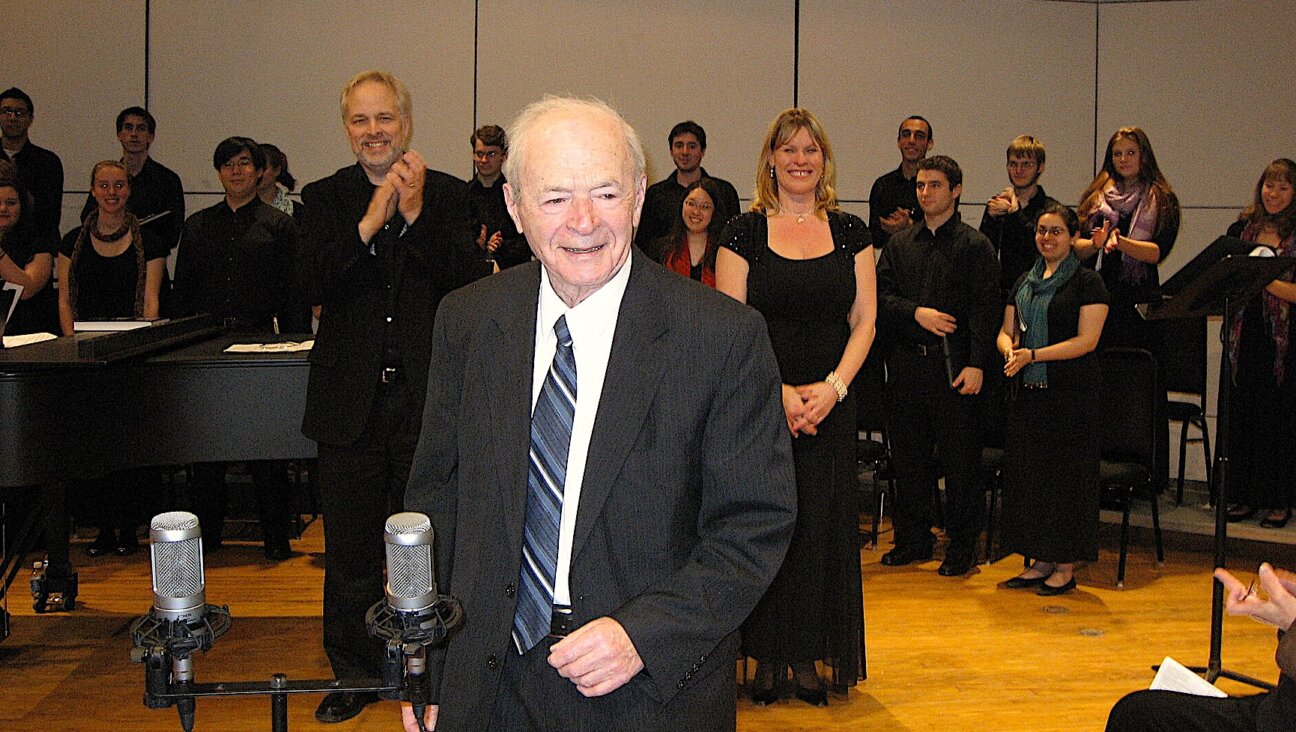The New ‘Gilmore Girls’ Was One Big Disappointment

Image by netflix
I was counting the days until the “Gilmore Girls” reboot dropped on Netflix. I obsessively read reviews, made very specific plans to watch with friends for the day of and decided exactly what snack I wanted to eat during (leftover pumpkin pie and coffee ice cream).
There was nothing more exciting than the idea of slipping back into that storybook town, with its familiar fairy-lit streets, Lorelai’s cozy house, and the rat-a-tat between loveably quirky townsfolk. Particularly now, when the world feels so uncertain, and all news is often bad news, Stars Hollow felt like the perfect escape.
Turns out, it really wasn’t.
“Gilmore Girls” writer and creator Amy Sherman-Palladino, who is Jewish, once called the hit series the “Jew-iest goyim show on television” because all the family did was “talk and argue, like Jews.”
And maybe that was exactly what the reboot was missing. The talking was slower, the quips too stilted and the arguing lacked the zingers and emotional depth we grew so accustomed to during the series.
But that’s just the beginning of the sequel’s problems.
Let’s start with Rory — because honestly, I have probably never hated a fictitious character more. When we meet up with her again she is a 32-year-old struggling journalist hopping from one freelance assignment to another. Despite being seemingly broke, she still manages to somehow flit back and forth to London on a moments notice where —ugh—she is still seeing Logan (who is engaged to a woman who lives in France).
Oh yeah, and she’s been dating a guy for two years who, in one of the show’s worst gags, she somehow keeps forgetting to break up with (it reaches a point where she has to remind herself on a post-it note).
Rory complains, talks about herself, complains some more and shows up to a job interview and is confused when she’s asked to discuss what stories she’s interested in writing. She also seems completely disinterested in what is going on in the life of her mother, Lane (who gets far less screen time than she deserves) or pretty much anyone she interacts with. She seems to have completely lost her obsessive love of books—a huge part of who the character was.
Did the writers want us to find her endearing and think that she is just “figuring things out”? I hope not.
And if we are playing the whole Team Jess, Team Logan, Team Dean game, I’m going to go out on a limb and say she deserves none of them (except maybe Logan because he is equally the worst).
What should have been a magical moment when Jess finally returns, just turns into Rory shrieking at him about her career and the fact that she doesn’t own enough underwear. If I ever brought up my lack of underwear to an ex-boyfriend during our first reunion, I would leap off a bridge after.
Rory isn’t the only problem, though.
The episodes are just too long. I never thought that I would find myself distracted while watching “Gilmore Girls.” They always had me from the very first strains of “Where You Lead” to the very end credits. But after about twenty minutes into the reboot my mind started to wander and my friends had picked up their phones.
Scenes that should have lasted about a minute (looking at you “Stars Hollow Musical”) go on so long that it is almost painful. Kirk is just not quite as lovable as he once was, and Rory and Lorelai’s interactions don’t properly encapsulate that mother-daughter bond that once felt so real, warm and fun.
Plus, were they always so selfish? There wasn’t anything particularly endearing about the fact that the women had two young boys follow them around in one scene, carrying their beach gear and holding umbrellas over their heads. Nope, just kind of weird that they were forcing some young kids to be their servants for the day.
There were some bright spots, though. Every scene with Paris and Doyle felt like the sun was finally shining. Rory and Dean’s run-in at Doose’s Market felt organic, familiar and satisfying. Emily’s storyline as a grieving window made for a beautifully crafted arc. Getting to see Mrs. Kim (and Mr. Kim for a second!) felt gratifying.
When we finally finished the last episode, my friends and I sat in a depressed heap on the couch.
“Gilmore Girls” was in no way the feel good show that put you in a particularly gleeful mood. But it was always smart, always thoughtful, always speedy and kept you on your feet.
After watching all four parts of this series, I mostly wanted to get under the covers and cry.
I will say that there was one thing I was thankful for (and this happened right after Thanksgiving, so it was all very fitting).
I never did get to transport back to the Stars Hollow I remembered so fondly. But I did get to have a different sort of comfort: surrounded by old friends, eating pie, and gleefully complaining about a TV show.
So maybe, in that way, the “Gilmore Girls” reboot truly, powerfully succeeded.
Thea Glassman is an Associate Editor at the Forward. Reach her at [email protected] or on Twitter at @theakglassman.

















